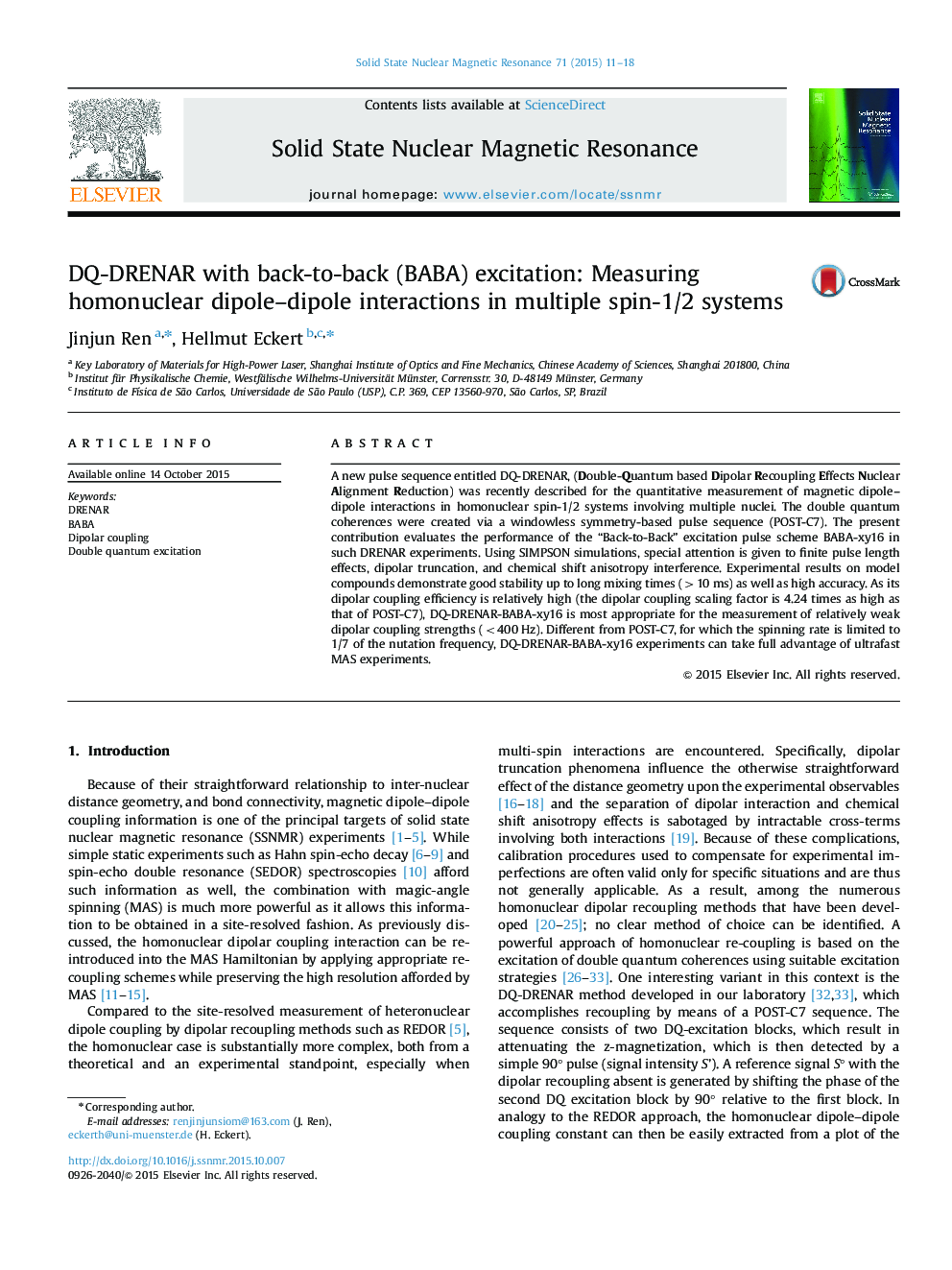| Article ID | Journal | Published Year | Pages | File Type |
|---|---|---|---|---|
| 5420311 | Solid State Nuclear Magnetic Resonance | 2015 | 8 Pages |
â¢First implementation of DQ-DRENAR using BABA excitation.â¢First simulation of finite pulse length effects upon DRENAR curves.â¢Detailed correction procedure against systematic errors, based on simulations.â¢New method for dipolar measurements with ultrafast MAS.â¢Experimental validation of DQ-DRENAR-BABA xy16 with crystalline model compounds.
A new pulse sequence entitled DQ-DRENAR, (Double-Quantum based Dipolar Recoupling Effects Nuclear Alignment Reduction) was recently described for the quantitative measurement of magnetic dipole-dipole interactions in homonuclear spin-1/2 systems involving multiple nuclei. The double quantum coherences were created via a windowless symmetry-based pulse sequence (POST-C7). The present contribution evaluates the performance of the “Back-to-Back” excitation pulse scheme BABA-xy16 in such DRENAR experiments. Using SIMPSON simulations, special attention is given to finite pulse length effects, dipolar truncation, and chemical shift anisotropy interference. Experimental results on model compounds demonstrate good stability up to long mixing times (>10Â ms) as well as high accuracy. As its dipolar coupling efficiency is relatively high (the dipolar coupling scaling factor is 4.24 times as high as that of POST-C7), DQ-DRENAR-BABA-xy16 is most appropriate for the measurement of relatively weak dipolar coupling strengths (<400Â Hz). Different from POST-C7, for which the spinning rate is limited to 1/7 of the nutation frequency, DQ-DRENAR-BABA-xy16 experiments can take full advantage of ultrafast MAS experiments.
Graphical abstractDownload full-size image
